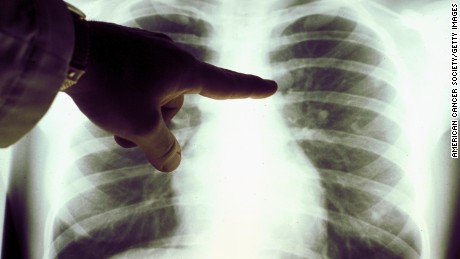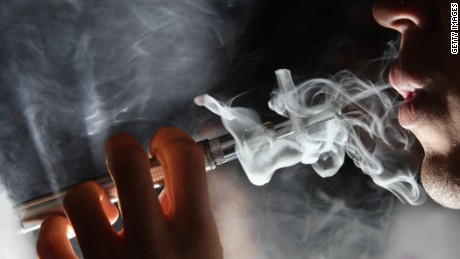Story highlights
- Finland has set a goal to be tobacco-free by 2040, with new measures introduced in January
- Measures include bans on smoking on balconies and extremely high fees for vendors
(CNN)The Finnish government has set an ambitious goal for residents in a bid to benefit their health -- and their bank balances.
Officials plan to make the country tobacco-free by 2040, meaning they want less than 2% of their adults to consume tobacco -- in any form -- by that deadline.
So that's more than 98% of the Finnish population saying no to cigarettes, snuff and other forms of smokeless tobacco, cigars, pipes and even e-cigarettes.
As per the trend in industralized countries, smoking rates in Finland have been on the decline in recent decades due to measures such as bans on advertising and shop displays, and the creation of smoke-free public spaces. In 2013, 16% of 15- to 64-year-olds in Finland smoked on a daily basis, while nearby in the UK, 19% of adults were smokers in 2014.
But at the start of this year, a new level of control measures came into force.
"The Finnish approach is revolutionary," said Kaari Paaso, head of the unit on harm prevention at the country's Ministry of Health and Social Affairs. "We want to get rid of all tobacco products."
Experts agree that the Finnish government is using innovation and creativity to get everyone to kick the habit.
Rather than targeting one area at a time, such as exposure in public spaces or cigarette use, Paaso said his ministry wants to be precautionary from every angle. It doesn't go down the path of advocating milder products that may do less harm, such as e-cigarettes or snuff. "It's a comprehensive set of policies," he said.
For example, neighboring Sweden has also seen a dramatic reduction in the number of smokers -- just 12.7% among men and 15.2% among women in 2013 -- but achieved this in part by promoting the use of snus, an oral smokeless tobacco product. The product, along with all other forms of oral tobacco, is banned in other member states of the European Union.
The UK is also adopting a harm reduction approach to reduce the number of smokers. Instead of snus, it backs the use of e-cigarettes to help people kick the habit.
But Finland wants rid of it all.
"We don't want to fall into the trap of other policies that have less harmful products," said Paaso, who fears that promoting other products will result in a new addiction for health officials to deal with in the future. "We want to phase out all products."
And that phasing out has begun.
Raising the cost of selling tobacco
Experts agree that one of the strongest policies in terms of tobacco control globally has been taxation. The rising cost of the habit, linked to higher taxes, has meant that many can no longer afford to smoke, and those who can smoke provide revenue for anti-smoking campaigns and quitting support services, to name a few options.
"The evidence suggests increasing pricing is the single most effective way to reduce demand," said Vaughan Rees, director of the Center for Global Tobacco Control at the Harvard T.H. Chan School of Public Health.
"In states where we see the highest tax rates, we see the lowest prevalence," he said, highlighting New York City, where then-Mayor Michael Bloomberg introduced city taxes on top of state taxes in 2010. Just over 14% of New Yorkers smoked in 2016, according to the NYC Smoke-Free program.
So Finland has now introduced another giant financial barrier for users: It increased the costs for vendors selling tobacco products.
"There's quite a high fee to license it and to sell it," Paaso said.
Any business wanting to sell tobacco must first apply and pay for a license, a one-off process, but an additional fee must be paid annually to cover the costs of surveillance officers in each municipality who will check that retailers are following the rules.
The surveillance fee is the killer, as this is calculated per checkout or cashier in any business and can be as high as €500 ($536) annually per checkout.
The fee is now set by individual municipalities, not the state, many of whom have decided this upper limit should be the actual cost.
"This has resulted in criticism from small shop owners and big stores ... saying it is disproportionally high from last year," Paaso said. "But that was not the idea." The ministry had hoped the fee would be scaled up annually.
A store with 10 checkouts could therefore pay more than $5,000 per year in addition to its license fee to sell tobacco to the public.
"Finland has come very far ... and now they're going to the next level, with innovation," said Kelly Henning, director of the public health program at Bloomberg Philanthropies, an organization working to promote impactful tobacco control policies, founded by the former New York mayor.
Henning highlights that the World Health Organization's Tobacco Free Initiative has six steps it recommends for effective control, known as MPOWER. The last letter stands for "Raising taxes on tobacco."
"They have in place all MPOWER policies at the highest possible level," she said.
Smoke-free balconies and cars
Another unique approach the Scandinavian country implemented this month was the ability to apply for a ban on people smoking on neighboring balconies if their presence is a disturbance.
Housing companies may now apply for the ban if smoke is seen to be spreading from someone's private balcony and onto other spaces. As in many other countries, bans are in place in public areas, but this new policy addresses a smoker's private space.
"You can apply for a ban," Paaso said. "There hasn't been big change ... but these measures are still quite new."
Finnish residents are also no longer allowed to smoke in private cars if people under the age of 15 are present. This is not unique, as other countries such as the UK have imposed bans in cars when children are present. In the UK, the cutoff age is higher, at 18.
Preventing the appeal to minors
One key strategy in Finland's approach to eradicate smoking is reducing the number of teenagers picking up the habit in the first place, by reducing its presence and its appeal.
As a result, new policies also limit the purchase of products that imitate tobacco or cigarettes, such as sweets and chocolates shaped as pipes or cigarettes. Though these products aren't banned, they face restrictions. For example, stores where customers receive discounts through the use of a loyalty card cannot offer such discounts on such items.
But much bigger restrictions face the e-cigarette industry. "E-cigarettes are sold in normal shops, but we have strict rules," Paaso said.
As of August, e-cigarettes had the same restrictions in terms of sales and public use as regular cigarettes, such as age limits, and they are no longer allowed to have any flavors. "They cannot have any distinctive taste," Paaso said, adding, "our approach is this basic idea to phase out all nicotine products."
The use of flavors in e-cigarettes has been the subject of much debate, amid fears that they will entice young people toward the habit and act as a gateway into smoking.
"That's absolutely crucial," said Harvard's Rees, who believes that e-cigarettes can be a useful tool to help people quit smoking and advocates the UK's stance on harm reduction. But his support ends when flavors are involved. "We're seeing a proliferation in flavors, including gummy bear and candy flavors that are intrinsically appealing to children."
A global mission?
Finland is not alone in wanting to reduce smoking and all tobacco-related habits among its population.
Henning and Rees highlight Australia, where plain packaging on cigarette boxes in combination with taxation has helped bring numbers down rapidly. In 2014-15, just 14.7% of adults 18 or over smoked daily -- less than than Finland -- compared with more than 16% in 2011-12.
"They increased the price dramatically, and we're now seeing a benefit," Rees said.
On the other end of the spectrum lies China. After a surge in demand for tobacco products in recent years as more people took up smoking, three cities have banned smoking indoors in public places, including the capital, Beijing.
"Tobacco-related deaths are rising because male smoking rates are so high," Henning said. More than 1.3 million people die each year of tobacco-related disease in China, according to the Tobacco Atlas, linked to the fact that more than 45% of men are smokers. "We're optimistic that these cities are going to lead the way."
On a global level, the WHO set a goal to reduce tobacco use among people over the age of 15 by 30% by 2025, to fit in line with goals to reduce rates of non-communicable disease, like cancer, as a result.
But Finland remains a pioneer, the first country to set a goal to end the problem in its entirety. Experts, as well as the government, believe they can make it happen.
"Governments should set themselves that goal of achieving exactly that," Rees said. But he acknowledges that not all countries would necessarily be able to achieve it, with culture playing a key role. "Finland, having a much more control over a relatively homogenous population, can realistically set that goal."
And Henning agrees that simply setting a target can make a difference. "It's a long shot," she said. "But Finland believes it's achievable."








